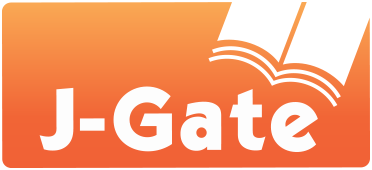Exploring Chatbot AI in improving vocational students’ English pronunciation
DOI:
https://doi.org/10.54855/acoj.231429Keywords:
Chatbot AI, vocational education, English pronunciation, quasi-experimental, A1 levelAbstract
Thanks to technological development, there has been a remarkable leap in the application of artificial intelligence, especially in education. This paper examines the effectiveness of Chatbot Mission Fluent, an AI chatbot, in improving English pronunciation among vocational students in a Hanoi college. Sixty vocational students participate in an A1 English course hosted in a quasi-experimental research design. After the course, participants were interviewed and asked to complete a survey questionnaire to collect their feedback on the AI Chatbot. The experimental group showed notably better English pronunciation than the control group. This research aims to address the knowledge gap regarding the use of AI chatbots as a tool in vocational education. Through this approach, the potential of AI chatbots in improving English pronunciation is carefully explored and emphasized among vocational students. However, this paper also noticed some difficulties in applying and monetarily supporting Missionfluent throughout the process. Overall, this study focuses on the significance of incorporating innovative technologies into language learning programs and highlights the beneficial potential of AI Chatbots’ application in improving vocational students' English pronunciation while acknowledging AI Chatbots’ drawbacks which were discovered in the procedure.References
Anggraini, A. (2022). Improving students’pronunciation skill using elsa speak application. Journey: Journal of English Language and Pedagogy, 5(1), 135-141.
Aswaty, P., & Indari, A. (2022). The Effect of Using Elsa (English Language Speech Assistant) Speak Application on Students’ Speaking Ability for the Eleventh Grade of Mas Darul Al Muhajirin in the Academic Year 2021/2022. Serunai: Jurnal Ilmiah Ilmu Pendidikan, 8(1), 18–23. https://doi.org/10.37755/sjip.v8i1.616.
Bajorek, J. P. (2017). L2 pronunciation in CALL: The unrealized potential of Rosetta stone, Duolingo, Babbel, and mango languages. Issues and Trends in Educational Technology, 5(1), 24-51.
Bin-Hady, W. R. A., Al-Kadi, A., Hazaea, A., & Ali, J. K. M. (2023). Exploring the dimensions of ChatGPT in English language learning: A global perspective. Library Hi Tech.
Brown, A. (2014). Understanding and Teaching English Pronunciation: A Teacher's Course Book. Routledge.
Brown, H. D. (2014). Principles of language learning and teaching (6th ed.). Pearson Education.
Brown, M., Dehoney, J., & Millichap, N. (2015). The next generation digital learning environment. A Report on Research. ELI Paper. Louisville, CO: Educause April, 5(1), 1-13.
Celce-Murcia, M, D Brinton., & J. Goodwin. (1996). Teaching pronunciation: A reference for teachers of English to speakers of other languages. Cambridge: Cambridge: University Press.
Celce-Murcia, M., & Olshtain, E. (2000). Discourse and context in language teaching: A guide for language teachers. Cambridge University Press.
Celce-Murcia, M., Brinton, D., & Goodwin, J. M. (2010). Teaching Pronunciation: A Course Book and Reference Guide (2nd ed.). Cambridge University Press.
Chen, C.F. (2007). Computer-assisted language learning and teaching. Retrieved, May 20, 2009, from http://www.nkfust.edu.tw/˜emchen/CALL/.
Chen, X., Zou, D., Xie, H., & Cheng, G. (2021). Twenty years of personalized language learning: Topic modeling and knowledge mapping. Educational Technology & Society, 24(1), 205–222. https://www.jstor.org/stable/26977868.
Derwing, T. M., & Munro, M. J. (2015). Pronunciation Fundamentals: Evidence-Based Perspectives for L2 Teaching and Research. Amsterdam: John Benjamins Publishing Company.
Darsih, Endang, Marwinto Wihadi, and Agie Hanggara. "Using ELSA App in Speaking Classes: Students’ Voices ." UNISET, 2021: 3-4.
Dörnyei, Z. (2009). The L2 motivational self-system. In Z. Dörnyei & E. Ushioda (Eds.), Motivation, language identity and the L2 self (pp. 9-42). Bristol, England: Multilingual Matters.
Gimson, A. C. (1989). English Pronunciation Practice. Edward Arnold Publishers.
Goh, C. CM, & Burns, A. (2012). Teaching speaking: A holistic approach. New York: Cambridge University Press.
Godwin-Jones, R. (2019). In a world of SMART technology, why learn another language? Journal of Educational Technology & Society, 22(2), 4-13.
Haryadi, S. H. (2020). Integrating “English Pronunciation” App Into Pronunciation Teaching: How It Affects Students" Participation and Learning. Participation and Learning.
Kim, N. Y., Cha, Y., & Kim, H.- S. (2019). Future English learning: Chatbots and artificial intelligence. Multimedia Assisted Language Learning, 22(3), 32–53. https://doi.org/10.15702/mall.2019.22.3.32
Ladefoged, P., & Johnson, K. (2011). A Course In Phonetics (6th ed.). Wadsworth Publishing.
Le, P. N., Vu, H. M. L., & Tran, M. N. (2021). Improving EFL Students’ Intonation In-Text Using Shadowing Technique with the Implementation of Google Text-to-Speech. AsiaCALL Online Journal, 13(1), 93-121. Retrieved from https://asiacall.info/acoj/index.php/journal/article/view/102
Lee, S., & Wong, P. (2019). The Use of Chatbot in Language Learning: A Systematic Review. Computers & Education, 141, 103610.
Levis, J. M., Sonsaat, S., Link, S., Barriuso, T. A., & Soto, C. (2016). Native and nonnative teachers of L2 pronunciation: Effects on learner performance. TESOL Quarterly, 50(4), 894-931.
Levy, M. (2016). CALL dimensions: Options and issues in computer-assisted language learning. Routledge.
Lin, C. C., Huang, A. Y., & Yang, S. J. (2023). A review of ai-driven conversational chatbots implementation methodologies and challenges (1999–2022). Sustainability, 15(5), 4012.
Nguyen, T. G. M. (2021). Some Common Ways for Students to Improve Pronunciation during Covid-19 Pandemic. AsiaCALL Online Journal, 12(5), 129-136. Retrieved from https://www.asiacall.info/acoj/index.php/journal/article/view/99
Rajadurai, J. (2001, July). An investigation of the effectiveness of teaching pronunciation to Malaysian TESL students. In Forum, 39(3), 10- 15. Retrieved from http://exchangees.state.gov/forum/vols/vol39/no3/p10.htm
Roach, P. (2009). English Phonetics and Phonology: A Practical Course (4th ed.). Cambridge University Press.
Russell, S., & Norvig, P. (2016). Artificial Intelligence: A Modern Approach (3rd ed.). Pearson.
Saragih, E., Tabrani, N., & Muthmainnah, N. (2021). The Use of Digital Feedback on ELSA Speak in Learning Pronunciation for Seventh Grade of Junior High School. JEELL (Journal of English Education, Linguistics and Literature), 8(1), 133–145. https://doi.org/doi.org/10.32682/jeell.v8i1.1965
Smith, J. (2018). The Impact of Technology on English Language Teaching and Learning. TESOL Journal, 9(1), 1-17.
Thomson, R. I., & Derwing, T. M. (2015). The effectiveness of L2 pronunciation instruction: A narrative review. Applied Linguistics, 36(3), 326-344
Vo, H. C. (2025). Resonance in Expressions of Facial Affect and Voice Affect in “Frozen” Animation. VNU Journal of Foreign Studies, 41(1S (Special Issue)), 29-43.
Wang, S., & Zhan, H. (2010). Enhancing teaching and learning with digital storytelling. International Journal of Information and Communication Technology Education (IJICTE), 6(2), 76-87.
Yang, H., Kim, H., Lee, J., & Shin, D. (2022). Implementation of an AI chatbot as an English conversation partner in EFL speaking classes. ReCALL FirstView, 1–17. https://doi.org/10.1017/S0958344022000039
Downloads
Published
How to Cite
Issue
Section
License
Copyright (c) 2023 Hoang Ngoc Tue, Duong Ngoc Han, Le Duc Hanh

This work is licensed under a Creative Commons Attribution 4.0 International License.
License
Authors retain copyright and grant the journal the right of first publication with the work simultaneously licensed under a Creative Commons Attribution 4.0 International License that allows others to share the work with an acknowledgment of the work's authorship and initial publication in this journal.
Authors are able to enter into separate, additional contractual arrangements for the non-exclusive distribution of the journal's published version of the work (e.g., post it to an institutional repository, in a journal or publish it in a book), with an acknowledgment of its initial publication in this journal.
Authors are permitted and encouraged to post their work online (e.g., in institutional repositories or on their website) prior to and during the submission process.
Copyright
The copyright of all articles published in the acoj remains with the Authors, i.e. Authors retain full ownership of their article. Permitted third-party reuse of the open access articles is defined by the applicable Creative Commons (CC) end-user license which is accepted by the Authors upon submission of their paper. All articles in the acoj are published under the CC BY-NC 4.0 license, meaning that end users can freely share an article (i.e. copy and redistribute the material in any medium or format) and adapt it (i.e. remix, transform and build upon the material) on the condition that proper attribution is given (i.e. appropriate credit, a link to the applicable license and an indication if any changes were made; all in such a way that does not suggest that the licensor endorses the user or the use) and the material is only used for non-commercial purposes.











